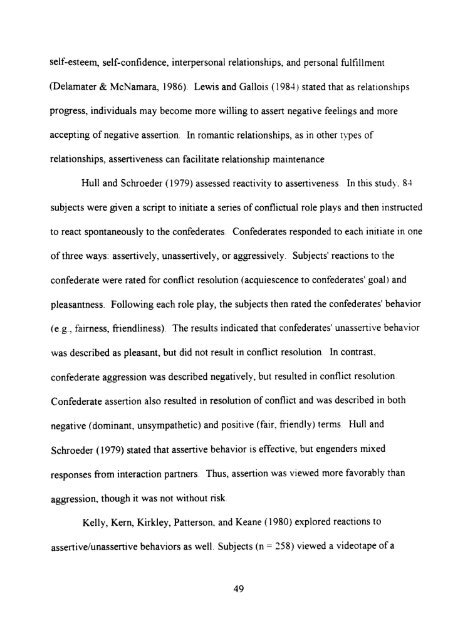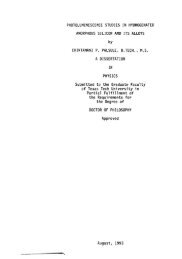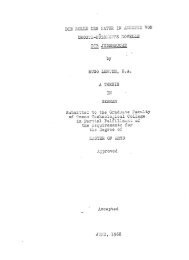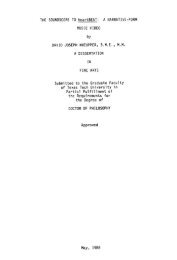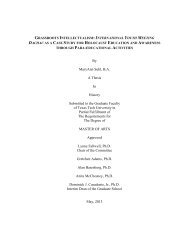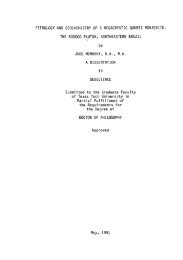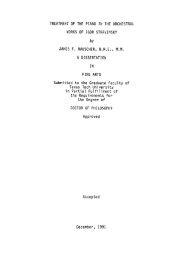THE FIVE FACTORS OF PERSONALITY AND INTERPERSONAL ...
THE FIVE FACTORS OF PERSONALITY AND INTERPERSONAL ...
THE FIVE FACTORS OF PERSONALITY AND INTERPERSONAL ...
You also want an ePaper? Increase the reach of your titles
YUMPU automatically turns print PDFs into web optimized ePapers that Google loves.
self-esteem, self-confidence, interpersonal relationships, and personal fulfillment<br />
(Delamater & McNamara, 1986). Lewis and Gallois (1984) stated that as relationships<br />
progress, individuals may become more willing to assert negative feelings and more<br />
accepting of negative assertion. In romantic relationships, as in other t\pes of<br />
relationships, assertiveness can facilhate relationship maintenance<br />
Hull and Schroeder (1979) assessed reactivity to assertiveness In this study. 84<br />
subjects were given a script to initiate a series of conflictual role plays and then instructed<br />
to react spontaneously to the confederates. Confederates responded to each inhiate in one<br />
of three ways: assertively, unassertively, or aggressively Subjects' reactions to the<br />
confederate were rated for conflict resolution (acquiescence to confederates' goal) and<br />
pleasantness. Following each role play, the subjects then rated the confederates' behavior<br />
(e.g., fairness, friendliness). The resuhs indicated that confederates' unassertive behavior<br />
was described as pleasant, but did not resuh in conflict resolution In contrast,<br />
confederate aggression was described negafively, but resuhed in conflict resolution<br />
Confederate assertion also resuhed in resolution of conflict and was described in both<br />
negative (dominant, unsympathetic) and poshive (fair, friendly) terms Hull and<br />
Schroeder (1979) stated that assertive behavior is effective, but engenders mixed<br />
responses from interaction partners. Thus, assertion was viewed more favorably than<br />
aggression, though h was not without risk<br />
Kelly, Kern, Kirkley, Patterson, and Keane (1980) explored reactions to<br />
assertive/unassertive behaviors as well. Subjects (n = 258) viewed a videotape of a<br />
49


